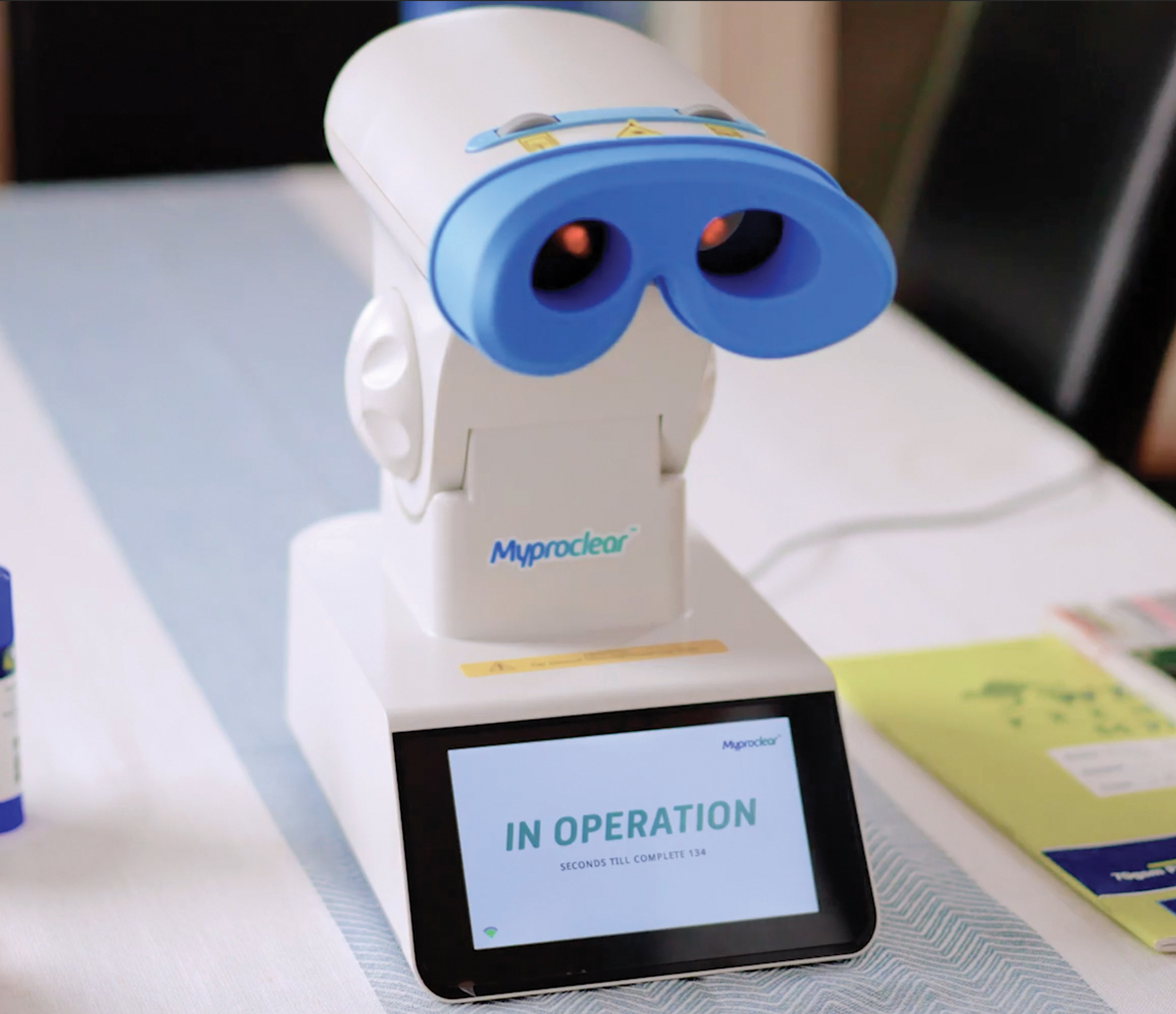 |
|
More children and adolescents in the intervention group achieved a two-line improvement in uncorrected visual acuity than compared to the control group (12 subjects vs. six subjects). However, best-corrected visual acuity remained the same for subjects in both groups. Photo: Eyerising International. Click image to enlarge. |
Clinicians outside the US are already using low-level red light therapy to slow ocular growth in pediatric myopia cases, as this treatment has been shown to substantially reduce rates of myopia progression. The treatment is not yet available here, but US optometrists and ophthalmologists have been following the treatment’s ups and downs with interest in anticipation of potential future adoption in their practices. The treatment came in for some recent criticism after safety issues were reported, but has generally shown positive results.
A new study conducted in China assessed the safety and efficacy of repeated use on children as young as age six and as old as 16. In all, 192 myopic children participated. Each subject had to have a diagnosis of high myopia in at least one eye in order to be considered for the study. The criterion used here was cycloplegic spherical equivalent refraction (SER) of -4D or more, which is typically considered high myopia in children (vs. the -6D definition in adults) given the evolving status of their refraction. Other inclusion criteria included astigmatism of ≤2D, anisometropia of ≤3 and best-corrected visual acuity of 0.2 logMAR (20/32 Snellen) or better.
After selecting their study population, the subjects were split into two groups: 97 were assigned to the intervention group and 95 were assigned to the control group. Since patients were assessed between February 2021 and April 2022, the presence of the coronavirus skewed the sample size for the statistical analysis. Some patients had to drop out of the study due to other health reasons, which left the researchers with a total of 188 subjects (96 intervention subjects and 92 control subjects) remaining in the study.
For this study, the team of researchers observed the axial length and cycloplegic SER measurements of each subject. During the trial, they administered low-level red light therapy to their subjects in the intervention group twice daily for three minutes per session. Then, the subjects received their second treatment four hours after the initial first session. This was repeated seven days a week during the trial. After 12 months, the researchers assessed the subjects’ outcomes in the intervention and control groups and compared the results.
“Repeated low-level red light demonstrates much stronger treatment efficacy among high myopia in children and adolescents aged six to 16 years, with 53.3% experiencing substantial axial shortening,” stated the researchers in their study, published in Ophthalmology. According to their findings, the mean change in axial length was -0.06mm in the intervention group and 0.34mm in the control group. Furthermore, the mean SER change for the intervention group was 0.11D at follow-up, while the control group reported with a -0.75D change.
“It is necessary to conduct further clinical research to determine whether axial length shortening and spherical equivalent refraction regression observed after one year of repeated low-level red light therapy are temporary or persistent phenomena as well as whether the treatment effects can be maintained after discontinuing red light therapy,” concluded the researchers in their study.
Xu Y, Cui L, Kong M, et al. Repeated low-level red light therapy for myopia control in high myopia children and adolescents. Ophthalmology. June 6, 2024. [Epub ahead of print]. |


